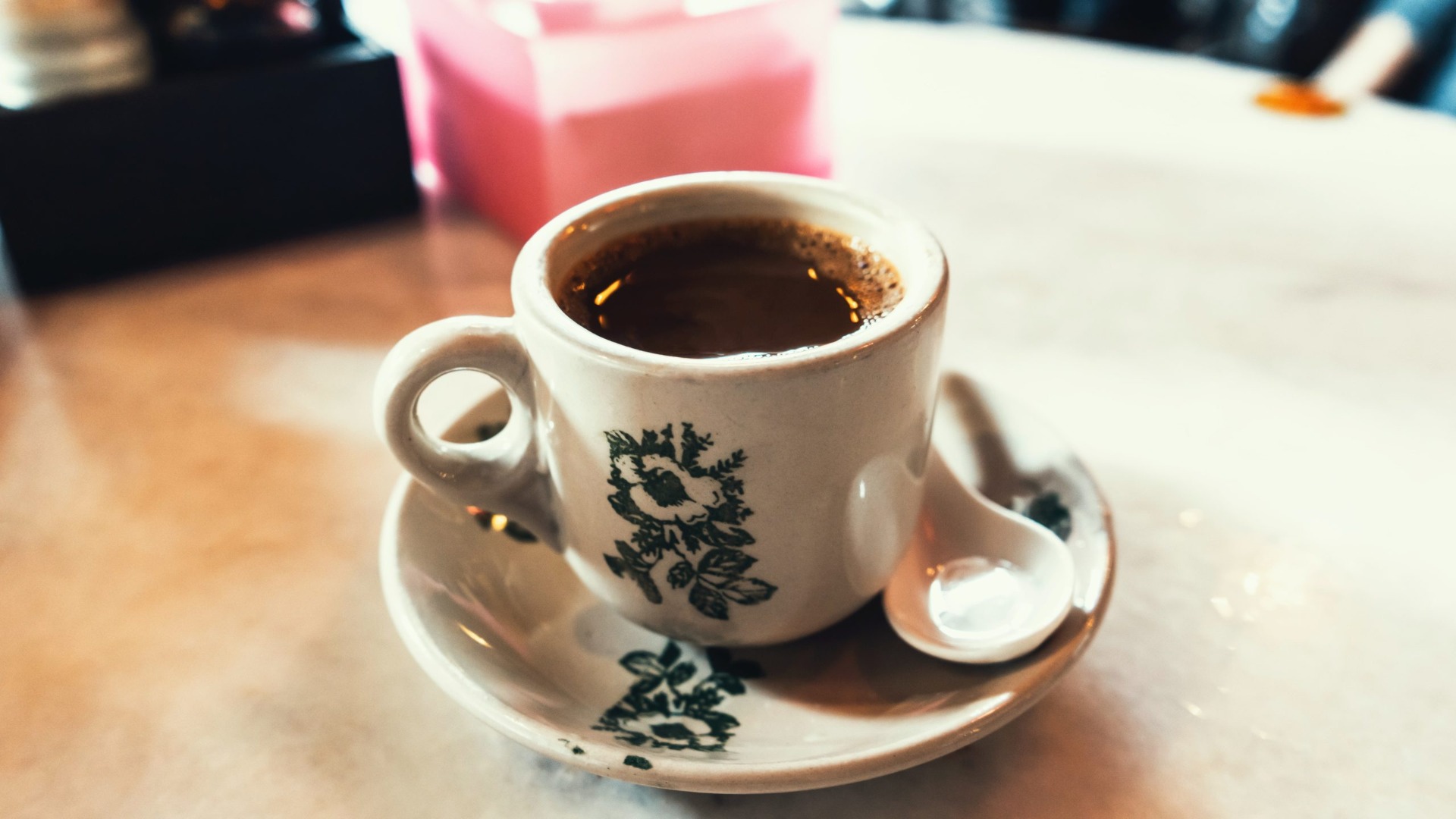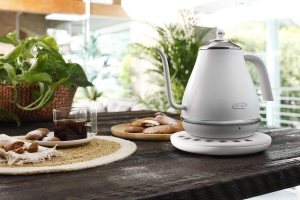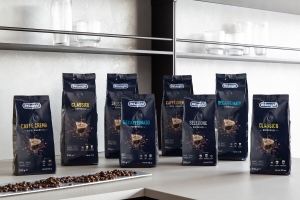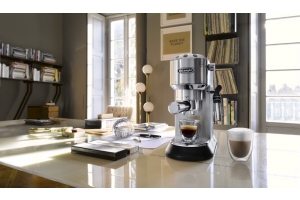The Bean
-
Posted: November 03, 2021Categories: The BeanRead more »
Coffee beans past their expiration will not make you sick; they will just lose their flavour and intensity. If you’ve got more coffee beans than you can brew or are about to throw away those that have expired, repurpose them instead. Old coffee beans can accomplish wonderful things around your house if you give them a chance. Whether you have excess coffee beans you can’t finish or old coffee beans lying around, here are 10 useful hacks to get more value out of your old coffee beans without tossing them. Besides the beans, you can also use old coffee grounds for these tricks to get some extra mileage out of your coffee, reduce waste and save money.
1. Ward Away Pests
Mosquitoes, lizards and cockroaches hate the smell of coffee, so old coffee beans can be ground and used to repel these pests. Place coffee grounds in uncovered bowls or if you’re targeting an outdoor area, sprinkle them around for a natural insect repellent.2. Make Your Plants Happy with Natural Fertilisers
[caption id="attachment_20288" align="alignnone" width="800"] Nutrient-dense coffee grounds also serve as a natural fertiliser for your plants. Photo from Bonnie Kittle.[/caption] Old coffee grounds contain nitrogen, calcium, potassium, iron, phosphorus, magnesium and chromium—great minerals for plant growth. Simply sprinkle coffee grounds onto the soil in your garden or in their pots as a natural fertiliser to help your plants thrive.
Nutrient-dense coffee grounds also serve as a natural fertiliser for your plants. Photo from Bonnie Kittle.[/caption] Old coffee grounds contain nitrogen, calcium, potassium, iron, phosphorus, magnesium and chromium—great minerals for plant growth. Simply sprinkle coffee grounds onto the soil in your garden or in their pots as a natural fertiliser to help your plants thrive. 3. Absorb Unwante
-
Posted: October 20, 2021Categories: The BeanRead more »
It’s easy to get overwhelmed by the endless choices when shopping for coffee beans. To help you navigate the coffee bean market, today we’re taking a step back to discuss the main differences between the two main types of coffee beans: Arabica and Robusta. But first, some quick facts. Arabica beans make up about 60% of worldwide coffee bean production. They grow at higher altitudes and thrive in cooler temperatures of 15 to 24ºC. Arabica beans are primarily grown in South America and Africa. Robusta beans make up most of the remaining 40% of worldwide coffee bean cultivation. They can grow at lower altitudes and thrive in warmer temperatures of 24 to 30ºC. Robusta is mainly grown in Southeast Asia, Africa and Latin America. So, which should you choose? Here are their top differences to help you decide which will suit your taste and lifestyle better.
Taste
Arabica coffee beans tend to have a smoother, sweeter taste with hints of fruits, berries, chocolate or sugar. They come in a wide range of varieties depending on where they are cultivated. Arabica beans can be sweet and soft but also sharp and tangy. The fun part is trying Arabica beans from different regions to see which you like best. [caption id="attachment_20132" align="alignnone" width="800"]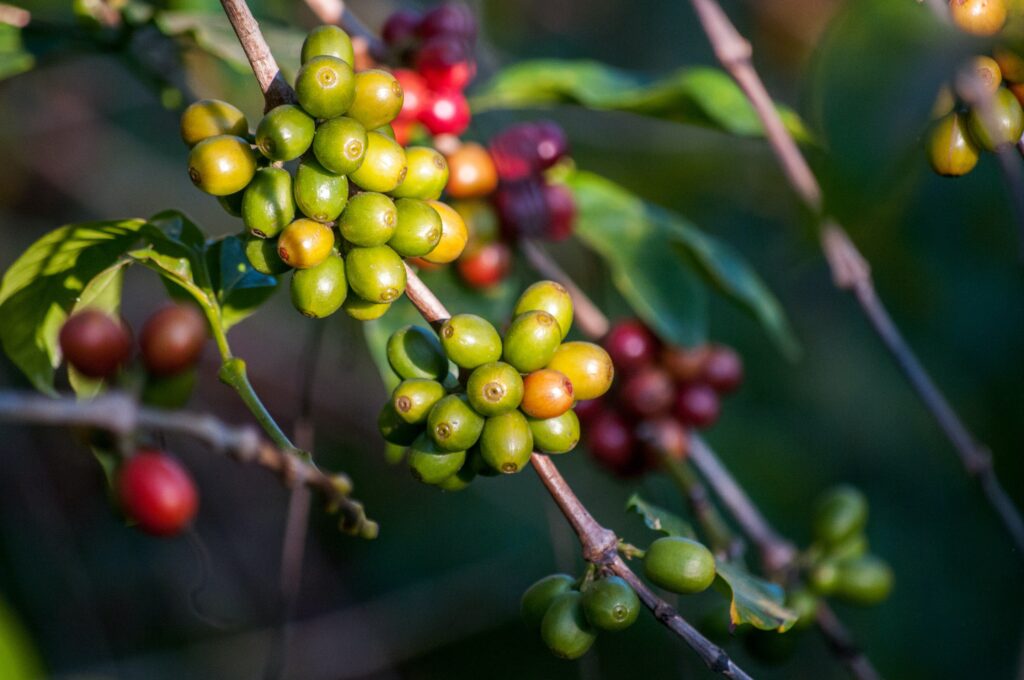
-
Posted: September 22, 2021Categories: The BeanRead more »
You may know India as a tea-drinking nation, but you’ll be amazed to find out about the country’s rich history when it comes to coffee. The drink’s origin dates back to 1600 AD when Baba Budan, a legendary merchant and 16th-century Sufi, went to Mecca on a pilgrimage and smuggled seven coffee beans from Yemen into Mysore, India. Upon arriving in Mysore, Baba Budan planted the seeds in Chandragiri – a hilly region located in the Indian state of Karnataka. It seems like a strange tale, but that’s how India’s coffee culture was born.
Where and How It’s Grown
[caption id="attachment_19254" align="alignnone" width="2560"] India’s coffee farms are pretty small; most are less than 10 acres in size. Photo from Rodrigo Flores.[/caption] Today, many aren’t aware that India is one of the world’s largest coffee producers. Ranked sixth internationally, India accounts for more than four per cent of global coffee production. Coffee farms are found in eight regions, mainly in the southern states. Wet-processed or washed specialty coffees are grown in mountainous areas, such as Baba Budan (yes, Chandragiri became known as Baba Budan thanks to the incredible origin story), Nilgiris, and Shevaroys. Robusta is a lot more common than Arabica (it’s 30 per cent v
India’s coffee farms are pretty small; most are less than 10 acres in size. Photo from Rodrigo Flores.[/caption] Today, many aren’t aware that India is one of the world’s largest coffee producers. Ranked sixth internationally, India accounts for more than four per cent of global coffee production. Coffee farms are found in eight regions, mainly in the southern states. Wet-processed or washed specialty coffees are grown in mountainous areas, such as Baba Budan (yes, Chandragiri became known as Baba Budan thanks to the incredible origin story), Nilgiris, and Shevaroys. Robusta is a lot more common than Arabica (it’s 30 per cent v
-
Posted: August 11, 2021Categories: The BeanRead more »
Do you like your cup of coffee super caffeinated for that extra kick? Is that strong, nutty, earthy flavour important, or do you prefer fruity, slightly more delicate notes? How you answer questions like that will determine which team you’re on: Arabica or Robusta. If you’re in the camp of “less caffeine” and “light and sweet” tasting notes, then consider picking up these five awesome Arabica roasts, available in either (or both) Singapore and Malaysia. Don’t have a coffee machine just yet? Explore our range of De’Longhi coffee machines for top-notch, cafe-quality java, just the way you like it.
Aceh Gayo Arabica
[caption id="attachment_17604" align="alignnone" width="2560"] The Aceh Gayo Arabica is lauded for its aromatic floral taste that delivers a bright and pleasant mouthfeel. Photo from JJ Royal.[/caption] Straight from the Gayo Plateau in Northern Sumatra, Aceh Gayo Arabica is a specialty-grade Indonesian coffee that gives you a balanced, medium-bodied drink.
The Aceh Gayo Arabica is lauded for its aromatic floral taste that delivers a bright and pleasant mouthfeel. Photo from JJ Royal.[/caption] Straight from the Gayo Plateau in Northern Sumatra, Aceh Gayo Arabica is a specialty-grade Indonesian coffee that gives you a balanced, medium-bodied drink.
-
Posted: August 04, 2021Categories: The BeanRead more »
Let’s face it, online shopping is unbeatable for today’s lifestyles, or what many are calling “the new normal”. Of course, there are plenty of good reasons why many still prefer making in-store purchases; you can see the item, feel the item, and at times, even try the item, thus greatly decreasing your chances of dealing with the dreaded buyer’s remorse. But when it’s not convenient to head out or you’re pressed for time, it’s natural to want to make purchases with a few clicks on the Internet. E-shopping is fast, easy, and you don’t even need to leave home. For hardcore java lovers, you’ll be glad to know buying fresh coffee beans online is 100% possible. You just need to know what to look out for.
Price
[caption id="attachment_17397" align="alignnone" width="2560"] The price of a packet of beans says a lot about its quality/cupping score, so pay attention to that. Photo from Bogdan Carmaciu.[/caption] Price isn’t just a number when shopping for coffee beans. It’s directly related to a coffee’s cupping score. So what is cupping, you ask? It refers to a standardised, globally recognised process in which a cup of coffee is evaluated based on aspects such as flavour, acidity, texture, sweetness – just to name a few. The score ranges between one to 100, and by determining a coffee’s quality this way, a price per kilo can be decided as fairly as possible. A score of around 80 is regarded as pretty decent, but since cupping scores aren’t usually listed on the packaging, you’re better off looking at prices and
The price of a packet of beans says a lot about its quality/cupping score, so pay attention to that. Photo from Bogdan Carmaciu.[/caption] Price isn’t just a number when shopping for coffee beans. It’s directly related to a coffee’s cupping score. So what is cupping, you ask? It refers to a standardised, globally recognised process in which a cup of coffee is evaluated based on aspects such as flavour, acidity, texture, sweetness – just to name a few. The score ranges between one to 100, and by determining a coffee’s quality this way, a price per kilo can be decided as fairly as possible. A score of around 80 is regarded as pretty decent, but since cupping scores aren’t usually listed on the packaging, you’re better off looking at prices and
-
Posted: June 30, 2021Categories: The BeanRead more »
For many of us, 2021 has meant more working from home and less going out on weekends to stay safe during the pandemic. This has often resulted in fewer trips to our favourite local coffee shops in town or near our workplaces. Thankfully for coffee lovers, more roasteries are offering subscription services that send us freshly roasted coffee beans direct to our homes. Arriving like clockwork, these deliveries enable us to continue indulging in artisanal coffees and fill our homes with the sweet aroma of delicious brews. Here’s our latest compilation of coffee subscriptions available in Singapore and Malaysia. Check out our previous lists in 2019 and 2020 for more providers to choose from. Happy brewing, and don’t forget to explore our range of De’Longhi coffee machines to do justice to the high-quality beans coming your way with barista-quality cups of coffee.
Parchmen & Co, Singapore
[caption id="attachment_17112" align="alignnone" width="1204"] Parchmen & Co offers an impressive range of exotic coffee beans for their subscription process. Photo from Parchmen & Co Instagram.[/caption] If you’ve been missing travelling lately, you can still explore exotic parts o
Parchmen & Co offers an impressive range of exotic coffee beans for their subscription process. Photo from Parchmen & Co Instagram.[/caption] If you’ve been missing travelling lately, you can still explore exotic parts o
-
Posted: January 27, 2021Categories: The BeanRead more »
Have you ever wondered what happens on a coffee farm? For one, your coffee beans are actually seeds and are called ‘coffee cherries’. And second, it can take up to five years before these coffee beans reach you. Let’s take a look at the fascinating journey your coffee bean takes before it’s sent to the roastery.
It Starts with a Seed
Your coffee bean’s great adventure starts with a humble seed. Freshly farmed (unprocessed) coffee beans are planted into rich soil in the nursery and left for about a month or two. Once these seedlings are big enough, they are planted for production where they are left to grow into coffee trees. Factors such as country of origin, climate, soil, altitude, wind and rainfall, will influence how the coffee will eventually taste, giving the coffee bean its unique taste profile. At this stage, the waiting game begins—coffee trees can take up to five years to produce fruits (Arabica trees take seven years!), which are the little cherries where the coffee beans are extracted from. It will take about another nine months before these coffee cherries are ripe enough to harvest.Harvesting
[caption id="attachment_11319" align="alignnone" width="1920"] Coffee cherries have to be harvested in stages because they don’t ripen at the same time. Photo from Daniel Reche.[/c
Coffee cherries have to be harvested in stages because they don’t ripen at the same time. Photo from Daniel Reche.[/c
-
Posted: January 20, 2021Categories: The BeanRead more »
You’ve probably heard of Arabica coffee, the world’s most popular coffee bean. Second to that is Robusta coffee, which makes up an estimated 40% of global coffee production. When combined, Arabica and Robusta make up close to 99% of coffee beans produced each year, with the rare Liberica making up for the remaining 1%. However, despite Robusta coffee’s high production, it is known to be the “least popular” option in the coffee world. But why? Read on to find out.
Growing Conditions and Characteristics
Robusta coffee beans are harvested from the plant Coffea canephora, which is easy to care for and has higher crop yields than Arabica coffee. Robusta coffee is mainly grown in Vietnam, which accounts for 40% of the world’s Robusta exports, followed by Brazil (25%) and Indonesia (13%). Robusta coffee grows at low altitudes, ranging from sea level to 600 metres. Arabica plants often grow between 2.5-3.5 metres in height compared to the taller Robusta plants, which reach from 4.5-6 metres. Robusta plants are robust just like its name - they can withstand high temperatures and large amounts of rainfall. Moreover, all it takes is 11 months for the Robusta plant to mature and be harvested.Caffeine Content
[caption id="attachment_11307" align="alignnone" width="2560"] Robusta coffee cherries are packed with caffeine, which acts as a pesticide. Photo from
Robusta coffee cherries are packed with caffeine, which acts as a pesticide. Photo from
-
Posted: December 09, 2020Categories: The BeanRead more »
Entering the traditional coffee shops of Singapore and Malaysia is like stepping back in time to the 1980s. They are more than just a place to grab a quick kopi (coffee) or a serving of soft boiled eggs – they are a second home for many local folks. But what’s so special about these hangouts, such that locals living in California queued an hour for a cup of kopi after Singapore’s oldest café, Killiney Kopitiam, recently opened its first outlet in the United States? Let us solve that mystery by exploring the rich and fascinating heritage of the local coffee scene.
The History of Kopitiam
In the late 1800s, Chinese immigrants from Hainan reached our nations’ shores. Some took up jobs in the service and hospitality sectors, often working for wealthy British and other European households. Post World War II, the departure of their Western employers forced the Hainanese to seek other means of earning a living. Many turned to setting up their own coffee shops, which are affectionately known as “kopitiam” today.The Appeal of Kopitiam
[caption id="attachment_10789" align="alignnone" width="2048"] A blast from the past: the appeal of kopitiam lies in its old-school decor. Photo from sharngst.[/caption] It’s the full-sensory experience at a kopitiam that makes its appeal so unique. Marble-top tables, old-fashioned mugs, overhead fans, and floor tiles that look right out of our grandmother’s kitchen. Some might call it old-school or run-down, but to a local, these are the essential aesthetics that mark out a genuine kopitiam. “Kopi C! Kopi Siew Dai! Kopi Gao!” The sounds and s
A blast from the past: the appeal of kopitiam lies in its old-school decor. Photo from sharngst.[/caption] It’s the full-sensory experience at a kopitiam that makes its appeal so unique. Marble-top tables, old-fashioned mugs, overhead fans, and floor tiles that look right out of our grandmother’s kitchen. Some might call it old-school or run-down, but to a local, these are the essential aesthetics that mark out a genuine kopitiam. “Kopi C! Kopi Siew Dai! Kopi Gao!” The sounds and s
-
Posted: November 25, 2020Categories: The BeanRead more »
The common conception of coffee is that of a dark, bitter, and caffeinated beverage that is derived from brown beans. Here’s the truth - technically, coffee beans aren’t beans. They are seeds from a fruit. So, grab a cup of your favourite brew as we pick out some rich and tasty facts about the coffee cherry.
1. Did you know that coffee is a fruit?
Surprise, surprise! You may or may not have known that coffee grows on a tree, and the beans are in fact, the pit of a fruit. That fruit largely resembles a cherry, which gives it its name - coffee cherry.2. The anatomy of a coffee cherry
[caption id="attachment_10360" align="alignnone" width="1024"] A typical coffee cherry contains two seeds that become coffee beans once roasted. Photo from Blue Coffee Box.[/caption] The cherry’s exterior is hard and waxy, with a juicy flesh lining the interior. Underneath that lining lies the pulp, which resembles the pulps of an orange. It has a slimy texture but contains complex sugars that provide sustenance for the cherry. Once you open up the pulp, you will find two seeds that are protected by a paper-like layer, which will come off during processing. Once the seeds are roasted, they will transform into the brown coffee beans that we are all familiar with.
A typical coffee cherry contains two seeds that become coffee beans once roasted. Photo from Blue Coffee Box.[/caption] The cherry’s exterior is hard and waxy, with a juicy flesh lining the interior. Underneath that lining lies the pulp, which resembles the pulps of an orange. It has a slimy texture but contains complex sugars that provide sustenance for the cherry. Once you open up the pulp, you will find two seeds that are protected by a paper-like layer, which will come off during processing. Once the seeds are roasted, they will transform into the brown coffee beans that we are all familiar with. 3. How is a coffee tree planted?
As long as the bean is not processed, it can be planted to grow into a coffee tree. There are four main coffee bean-growing regions around the world: Central America, South America, Africa and Indonesia. Known as the Coffee Belt, these regions share a tropical climate and have rich environments that support the growth of co








